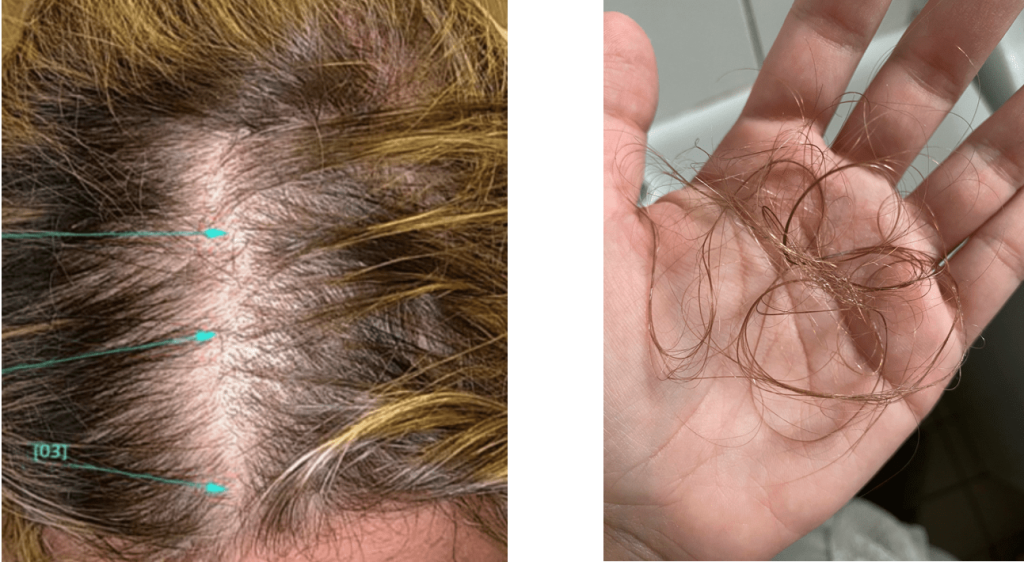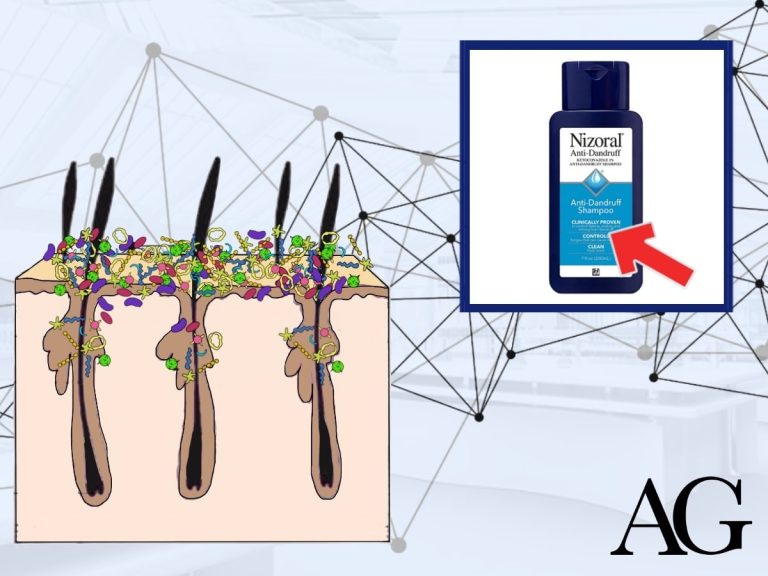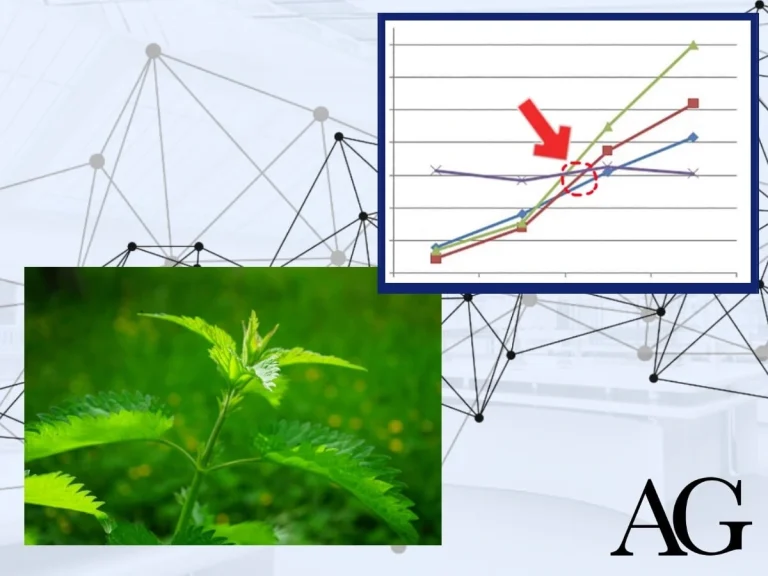What is telogen effluvium?
Even in the absence of a hair loss disorder, it is perfectly normal to shed between 100 and 150 hairs per day. This is normal and isn’t cosmetically perceptible as new hairs will start to grow where the old ones fell out.
Telogen effluvium occurs when too many hairs start to fall out and/or when there is a delay in the new hairs growing in their place. In other words, telogen effluvium occurs when too many hairs shed and too few hairs replace them. This can lead to a visibly perceptible decrease in hair density, as seen below.

In order to understand telogen effluvium, we need to understand the hair cycle. This is because strictly speaking, telogen effluvium is a disruption to the hair cycle, leading to an increase in the percentage of telogen hairs.
Our hair follicles follow a continuous cycle of growth (anagen), rest (catagen) and shedding (telogen).
Anagen (growth) phase: In this phase, the hair bulb is firmly connected to the dermal papilla and the cells in the hair bulb proliferate, creating new cells thereby, pushing the hair shaft out. An average hair on the scalp typically spends 2-7 years in this phase. Under normal circumstances, about 85% of our hairs will be in the anagen phase at any given time.
Catagen (rest) phase: Eventually, each hair follicle will reach the end of the anagen phase and will enter the catagen phase. In this phase, cell division comes to a halt and hair stops growing. This phase lasts approximately 10 days. The dermal papilla starts to detach from the bulb – reducing blood supply to the follicle. About 1% of our hairs are in the catagen phase at any given time.
Telogen (shedding) phase: The dead hair strand starts wiggling out of its groove and falls in about 2-6 weeks. The actual shedding is sometimes referred to as the ‘exogen’ phase. It is in this phase that we experience some minor and perfectly normal shedding from the scalp. New anagen hair follicles begin to form underneath the dead hair. About 10 to 15% of hairs are typically in the telogen phase at any given time.
The phase of each follicular unit (hair) is independent from the phase of other hairs. For instance, a hair in the telogen phase could be next to a hair in the anagen phase. However, certain triggers can cause a bunch of hairs to prematurely enter the telogen phase at the same time.
As mentioned, a healthy scalp has about 85% of hairs in the anagen phase, 1% in the catagen phase and 10-15% in the telogen phase.

When the ratio of telogen hairs on the scalp goes over 20%, this is considered telogen effluvium. The greater the percentage of telogen hairs, the more severe your case of telogen effluvium.
What causes telogen effluvium?
Telogen effluvium can be caused by anything that’ll disrupt the hair cycle and increase the proportion of telogen hairs on the scalp. Telogen effluvium is most commonly a response to a bout of severe mental or physical stress. This is why telogen effluvium is also known as “shock loss”.

Stressful events such as a major breakup can shock our bodies and as a response, a large proportion of one’s hair follicle’s can rapidly and prematurely shift from the anagen phase to the telogen phase. In essence, this is the body’s way of allocating energy and resources to the more vital organs in the body during times of significant stress.
Here are the main causes of telogen effluvium:
Emotional stress
Psychologically taxing events such as the loss of a loved one, excessive anxiety at work or a hard breakup can cause telogen effluvium. During periods of elevated stress, our cortisol (stress hormone) levels go up. Elevated levels of cortisol can lead a degradation of hyaluronan and proteoglycan around hair follicle sites which can in turn interfere with the hair cycle.
Physiological stress
Sleep deprivation, a major surgery (like a hair transplant), childbirth (known as ‘postpartum effluvium’), being born (newborn babies usually experience some shedding too) or other major physical stressors.
Sudden diet changes
Sudden changes in your diet, extended periods of calorie deficit, nutrient imbalances and rapid weight loss. Deficiencies in protein or surpluses of certain nutrients like Vitamin A can also lead to telogen effluvium.
When the body isn’t receiving sufficient nutrients or calories, the most vital organs in the body get priority access to the limited micronutrients available in the body. Hair follicles are very metabolically active and require sufficient nutrients for normal function however, since hair follicles are not essential for survival, hair follicles are low down in the list of prioritisation.
Remember that optimal caloric intake and required nutritional profile will also depend on your lifestyle. An athlete will likely require more calories than someone who doesn’t regularly engage in physical exercise.
Illnesses
High fevers, severe infections, typhoid, tuberculosis, syphilis, hyperprolactinimia and other illnesses can cause TE.
Medications
Certain medications like synthetic retinoids, beta blockers, calcium channel blockers, birth control pills, amphetamines, anticonvulsants, antidepressants, and non-steroidal anti-inflammatory drugs such as ibuprofen can increase the ratio of telogen hairs.
Seasonality
There are also periodic shifts in telogen:anagen ratio most of us experience on a yearly basis. Due to changes in the amount of daylight and UV we are exposed to as well as changes in our circadian rhythm, we tend to see peaks in telogen hairs around July. Most of the time, seasonal changes in telogen hairs do not result is visibly barer scalps. By winter, anagen to telogen ratio will have stabilised again.
We usually see a delay of 2 to 8 months between the stressful or shocking event and the bout of hair shedding. This is because is takes some time for the hair to enter the telogen phase and wiggle out.
Luckily, once the stressful event has passed, the hairs on your scalp will shift back to their baseline anagen:telogen ratio and your hair will grow back over the next few months. So, in the vast majority of cases, telogen effluvium is only a temporary form of hair loss and is fully reversible.

Different causes will usually result in different degrees of telogen effluvium. Some triggers like seasonality will often have small effects that are barely perceptible. On the other hand, other causes such as surgeries can have very significant effects on the ratio of telogen hairs and therefore result in excessive shedding and barer scalps that are obvious to others.
The hair cycle is regulated by genetics as well as a balance of proteins and hormones in our body. These hormones can be knocked out of balance due to a number of causes, thereby causing telogen effluvium.
What is chronic telogen effluvium?
When we find ourselves chronically over-stressed, whether it’s caused by psycho-emotional stress, chemical stress such as exposure to toxins, environmental stress like smoke or other lifestyle considerations, we may experience chronic telogen effluvium. This is when the percentage of your telogen hairs is persistently above 20%.
Common causes for chronic telogen effluvium:
Thyroid dysfunction
The thyroid is a butterfly-shaped gland in the neck that secretes hormones that play a vital role in many of our body’s functions – including healthy hair growth. When thyroid glands are under-active (hypothyroidism), our hair health is impaired. This is because thyroid hormones are required for normal stem cell function.
By contrast, an overactive thyroid (hyperthyroidism) can secrete too much thyroid hormone thereby overstimulating the body and depleting stem cells and causing hair loss.
Chronic health conditions
Other chromic health ailments like small intestinal bacterial overgrowth, gut dysbiosis and hyperparathyroidism can also lead to telogen effluvium.
Nutrient deficiencies
Zinc deficiency: Zinc is an essential micronutrient that plays a key role in hair follicle recovery and prevents it from prematurely entering the catagen phase. Zinc is also an important for healthy thyroid function. Low zinc levels may also be associated with heavy metal toxicity related hair shedding as zinc is involved in the body’s heave ,metal detoxification pathways.
Iron deficiency: As study showed that “serum ferritin levels below or equal to 30 ng/mL are strongly associated with telogen hair loss.” Although iron deficiency is most prevalent in premenopausal women due to blood loss during menstruation, depending on other factors such as diet, iron deficiency could affect anyone.
Vitamin D deficiency: When it comes to hair maintenance, vitamin D plays a role in initiating the anagen phase of the hair cycle. Vitamin D also supports normal thyroid function, antimicrobial defence and can help minimise inflammation – all of these are important bodily functions involved in the maintenance of healthy hair growth and hair cycle regulation.
Malabsorption: Nutrient deficiencies may be addressed by consuming more or addressing the underlying malabsorption disorder – if there is one. At the end of the day, it’s what we absorb that matters (which is not necessarily all that we eat). Poor gut health is widespread and responsible for decreasing our ability to absorb and make use of key nutrients that may be in our food.
Malabsorption can be triggered by a myriad of causes such as low stomach acid, alcoholism, celiac disease, copper deficiency and more.
Nutrient surpluses
There are a number of studies that show that consuming excessive micronutrients and minerals such as selenium, iodine and vitamin A can lead to abnormal shedding of hair.
Heavy metal / Trace element toxicities
Chronic exposure to high levels of heavy metals like thallium, cadmium or mercury can impede bodily functions which support the normal operation of the hair cycle. Toxic elements are often found in our water, air and food.
Dandruff
Those darn flakes that affect a whopping almost-50% of the adult post-pubescent population can actually promote telogen ratios in some people.
Excess dandruff is associated with disrupted hair cycles and can precipitate telogen telogen effluvium driven hair shedding. This is because dandruff is often linked to scalp micro-inflammation which reduces scalp health.
Our scalps are populated with communities of yeasts, fungi and bacteria. This is our scalp microbiome. Most of the time, the microorganisms in our scalp live in balanced harmony and are actually good (essential!) for our health.
These bacteria feed off the byproducts of our scalps like dead skin cells and sebum (oil released from our sebum glands). In exchange, these microorganisms help mediate certain proteins and nutrient pathways that we depend on for healthy hair cycling.
The problem arises when this delicately balanced cocktail of microorganisms falls out of harmony and we develop too many (or the wring kinds of) microorganisms. For instance, overpopulation of Malassezia yeasts or cutibacterium acnes bacteria can lead to dandruff related inflammation and increased oxidative stress. This in turn can shorten anagen lengths.
Some solutions for dandruff include ketoconazole shampoo, zinc pyrithione shampoo and tea tree oil.
Does telogen effluvium progress in a pattern?
It’s well-known that for men with androgenic alopecia (pattern baldness), thinning typically starts at the temples and crown, and then progresses throughout the rest of the top of the scalp resulting “horseshoe baldness”.
However, in female pattern baldness, the progression of hair loss can also appear to be diffuse.
So, does telogen effluvium also follow a pattern?
Telogen effluvium typically expresses in more of an overall diffuse hair shedding throughout the scalp (but not always!). Although hair shedding from telogen effluvium is typically spread throughout the scalp, certain people (especially women) will experience shedding along the hairline and at the temples.
How to know if you have telogen effluvium?
A lot of the time, severe forms of telogen effluvium are very obvious. You’ll often see abnormally large volumes of hair stuck in your comb, clumps of hair coming off in the shower, shedding when shaking your scalp etc.
You can also ask yourself wether you have experienced a traumatising event in the last year.
But if you’d like to know wether you perhaps have a milder form of telogen effluvium, or have chronic telogen effluvium, there are a number of tests you can take in order to help discern wether or not your have telogen effluvium.
1. Trichoscopy exam
A trichoscopy exam is dome with a trichogram – a device that helps magnify and analyse the scalp. A reputable dermatologist or hair specialist in your area will be able to perform this exam.
This exam will reveal the number of hairs, the ratio of anagen to telogen hairs and the presence (if any) of hair follicle miniaturisation (hair thinning). The results will be able to give a pretty indication as to wether you might have telogen effluvium, pattern baldness or both.
2. Wash test
As with the hair pull test, the wash test is more of a makeshift test compared to the trichoscopy exam, That said, this test can still give a fairly good indication as to wether or not you have telogen effluvium. Here is how to conduct this test:
- Refrain from washing your hair for 5 days
- Wash your hair in the sink with the drain covered by a gauze
- Collect, count and measure the hairs entrapped by the gauze
- Separate the hairs into a group of hairs equal to or shorter than 3cm in length and another group of hairs equal to or greater than 5cm in length.
- Check the thickness of each hair
Here is how this study interprets these results:
- Shedding more than 100 hairs per day might be indicative of telogen effluvium
- Shedding more than 100 hairs per day where 10% of these hairs are shorter than 3cm might be indicative of telogen effluvium AND androgenic alopecia.
- Shedding hairs all of which have the same thickness might be indicative of telogen effluvium.
- Shedding hairs of different diameters might be indicative of telogen effluvium AND androgenic alopecia or androgenic alopecia by itself.
Treating Telogen Effluvium
In the most basic terms, resolving a bout of telogen effluvium looks like this:

The causes of TE can be very widespread. Try to pinpoint the cause or multiple causes of your telogen effluvium so you can start to address this. A good starting point is asking yourself what symptoms you have been experiencing over the last 8ish months. Specifically, have you:
- Experienced significant trauma or stress?
- Had a significant lifestyle change like a change in diet?
- Started a new supplement routine (specifically, vitamin A, iodine, selenium)?
- Started taking a new medication?
- Moved to a new house with lead pipes or copper plumbing soldered with lead?
- Become sick or infected by a significant infection?
- Have you developed dandruff?
- Been exposed to significant toxic mold?
Here are some symptoms associated with some known causes of telogen effluvium.
| Possible trigger | Possible Causes | Possible symptoms |
| Hypothyroidism | Vitamin D deficiency, Zinc deficiency, celiac disease, over supplementation of iodine, excessive toxic element exposure | Exhausted, cold, forgetful, irregular menstrual cycles, puffy face, coarse skin, weight gain. Reference |
| Hyperparathyroidism | Vitamin D deficiency, excess iodine intake | Kidney stones, excessive urination, stomach ulcers, weight gain, infertility, loss of appetite Reference |
| Emotional stress | Harsh breakup, loss of a loved one, work-related stress, fired from your job etc. | Anxiety, stress |
| Crash diet | Rapid weight loss and caloric deficit. | |
| Physical stress | Sleep deprivation, child birth, surgery | Exhaustion |
| Certain medications | Synthetic retinoids, beta blockers, calcium channel blockers, birth control pills, amphetamines, anticonvulsants, antidepressants, and non-steroidal anti-inflammatory drugs such as ibuprofen | |
| Gut dysbiosis | Infections, Hugh sugar diet, prolonged antibiotic usage Reference | Acne, poor bowel movements, diarreha , bloating, bad breath, IBS Reference |
| Nutrient surpluses | Over-supplementing with iron, iodine, vitamin A, selenium | Headaches, brain fog, brittle hair, cold hands |
| Nutrient deficiencies (iron, zinc, vitamin D, B-vitamins) | Delayed wound healing, skin texture changes, | |
| Heavy metal toxicity | Cigarette smoking, drinking contaminated water, large mercury-containing fish | Brain fog, joint pain |
| Febrile infections | Typhoid, malaria | Vomiting, diarrhoea, headache, tiredness, muscle aches |
| Dandruff | Microorganism overgrowth, nutrient deficiencies, eczema, psoriasis, sebhorrreic dermatitis | Flakes of dead skin, itchiness, inflammation, hair loss |
If you suspect to have experienced any of these triggers, it might be worth checking with a certified health care practitioner. They will be able to make an accurate diagnosis or recommend a blood test which can help with an accurate diagnosis.
Here are a number of test that could help you identify wether any of the above conditions may be contributing to your hair shedding.
Iron level test
An iron deficiency can most certainly have adverse effects on hair growth however, so can an iron surplus. Keeping your iron levels inside of a healthy range is important. Optimal ferrite levels vary by age and sex although 30 to 300 ng/ml are considered normal for men and 10-200 ng/ml for women.
Vitamin D levels
Considering the prevalence of vitamin D deficiency amongst our modern office-working, indoor-loving gremlins that make up our society…just kidding but seriously, vitamin DF deficiency is is quite common so getting this tested might be worth it if you suspect this to be a cause of your TE.
Although there are differing opinions, ideally, you’d want vitamin D levels in the range of 25 – 80 ng/ml. Vitamin D levels can be increased with a supplement or by increasing your exposure to the sun.
Thyroid test
To give you an idea of how common thyroid dysregulation is, is it estimated that between 3 and 10% of adults have hypothyroidism. That’s by no means negligible!
A comprehensive thyroid test will allow to check your TSH (Thyroid Stimulating Hormone), T3, T4, free T3 and antibodies. Here is a reference for the optimal ranges of each hormone:
- TSH: 0.5 – 2µIU/mL (0.5 – 2.5µIU/mL in elderly people)
- Free T4: 15-23 pmol/L
- Free T3: 5 – 7 pmol/L
- Reverse T3: 11 – 18ng/dl
- TPO Antibodies: < 2 IU/mL
- TG Antibodies: < 2IU/mL
If your test results are out of this range, it may be worth consulting with your medical provider as this could be contributing to an increased telogen ratio.
Gastrointestinal map (GI-MAP)
Gut health and overall health are intimately connected. A stool test can provide insightful information into your gut health and can reveal the presence of gut issues such as H. Pylori infection.
Hair heavy metal analysis:
A hair mineral test should be able to provide an indication as to wether you are exposed to high levels of heavy metals which could be driving your telogen effluvium.
Bear in mind that it is not all that rare to be exposed to high levels of heavy metals as these can be found in: cigarette smoke, certain kinds of paint, some sources of unfiltered water, large mercury-contaminated fish, mercury amalgam fillings.
Other treatments
There are treatment that don’t directly address the root cause of hair shedding but may be able to reduce the symptoms. These may be suitable treatments for certain people while their hair cycle normalises after a bout of telogen effluvium. This can include any treatment that accelerates the transition into anagen phase or prolongs the anagen phase. For instance, minoxidil. Amongst other things, minoxidil promotes entry into the anagen phase and prolongs the anagen phase.
Other treatments like topical peppermint oil and black seed oil may also help extend the anagen phase.
The Telogen Effluvium & Androgenic alopecia link
It is possible to simultaneously have multiple types of hair loss. Not only that, one type of hair loss might be accelerating another type of hair loss.
For instance, we know that androgenic alopecia (pattern baldness) is a thinning disorder whereby the thinning takes place in between hair cycles.
In the event of accelerated hair cycling due to many bouts of telogen effluvium or chronic telogen effluvium, hair follicles are exposed to more opportunities for them to become thinner and thinner. In other words, shorter hair cycles caused by TE can speed up hair thinning caused by pattern baldness.
This is called “telogen effluvium unmasking androgenic alopecia”


